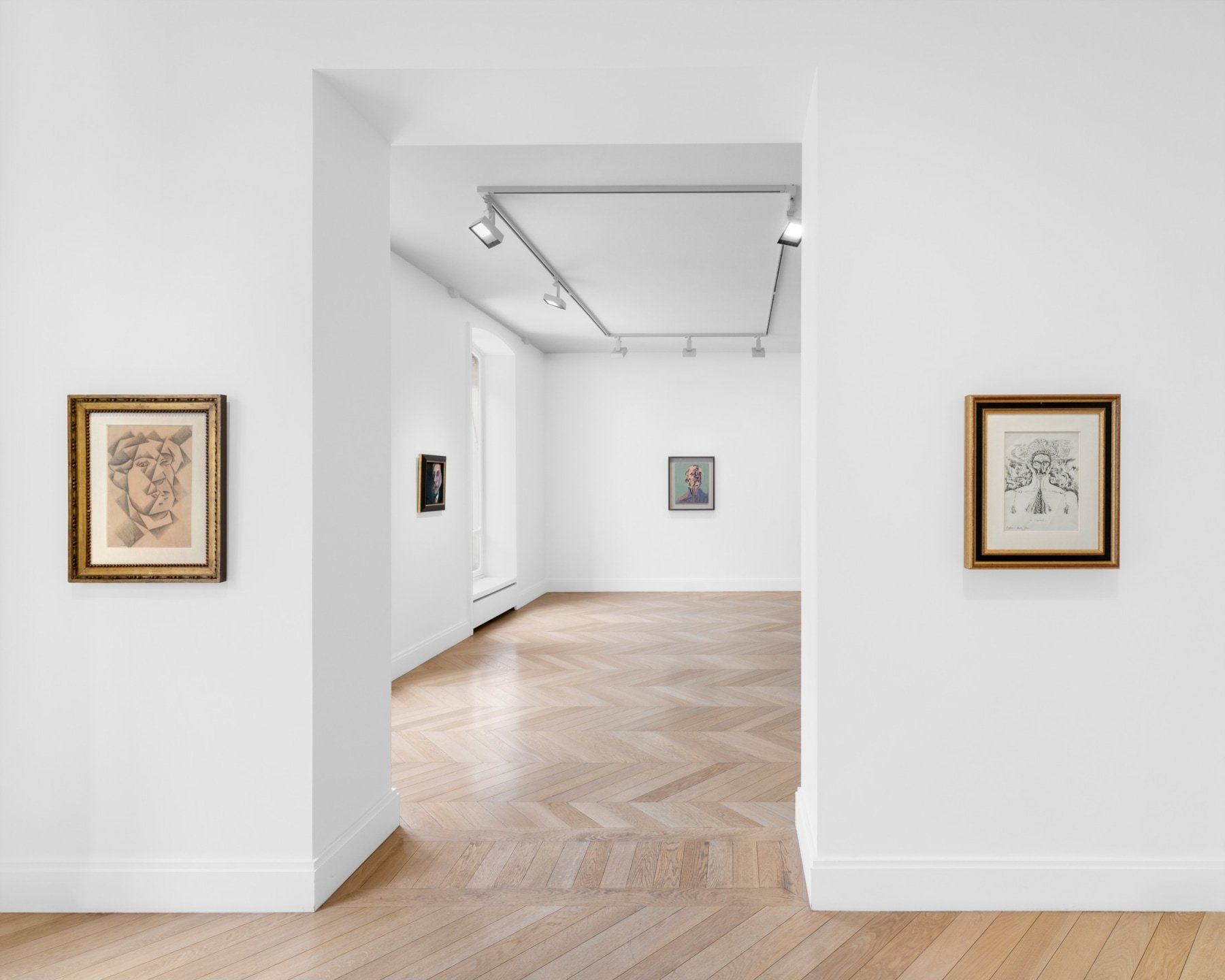SELF-PORTRAITS
Skarstedt Paris is pleased to announce Self-Portraits, an exhibition that delves into the multifaceted nature of self-portraiture, exploring its significance as a means of self-expression throughout the twentieth and twenty-first centuries.
February 13- March 29, 2025
Whether rendered in traditional or groundbreaking modes, each work on view delves into the paradoxes, nuances, and idiosyncrasies that make each identity unique, thereby connecting the artist’s individual ethos with universal values and themes. Across the exhibition, the boundaries of self-representation dissolve into bold experimentation, where themes of transformation, temporality, and vulnerability intertwine. Dubuffet’s Self-portrait from 1966, one of the six he ever made, would become the cover image of the Pompidou retrospective in 2001. It is part of the L’Hourloupe series, a cycle that sets a creative protocol between 1962 to 1974, a veritable exploration of a new language that touches on all artistic spheres explored by the French artist.
Using sinuous, labyrinthine graphics, Dubuffet composed schematic spaces like constructs of the mind. The surreal and the introspective converge in André Masson’s Le Voyant - Ville Crânienne (1940), a poetic synthesis of ink and gouache that evokes the fractured nature of identity as seen through a surrealist lens. The self emerges as both seer and subject, a fragment of the subconscious shaped by unseen forces. This notion of transformation continues in the conceptual play of Cindy Sherman, whose Untitled Film Still #24 (1978) disrupts the idea of self-portraiture as truth-telling.
By embodying various personas through costumes and cinematic framing, Sherman dissolves herself into archetypes, exposing the performative masks society demands and the fluidity of personal identity. Martin Kippenberger's Untitled (1992), part of his series of Hand Painted Pictures, interrogates the conventions of self-portraiture by embracing irony and subversion, presenting the artist's identity as a fractured, performative construct. Through a deliberate amalgamation of self-deprecation and painterly virtuosity, Kippenberger critiques the commodification of the artist's persona while questioning the authenticity of self-representation itself.
Together, these artists reveal the self as a site of tension and transformation—a space where cultural, personal, and artistic identities collide and evolve. The works in Self-Portraits invite viewers to explore the shifting terrain of representation, where each artist unearths the essence of individuality within the universal human experience.


